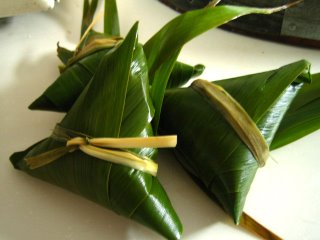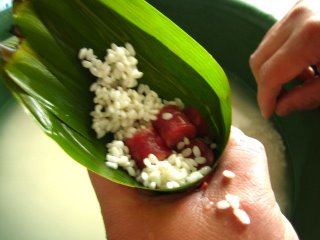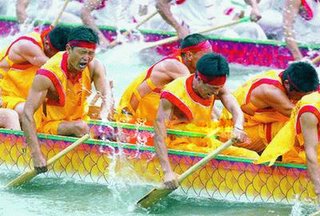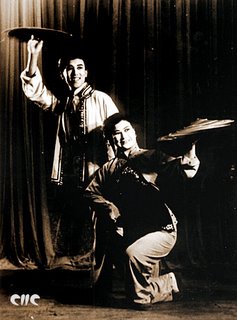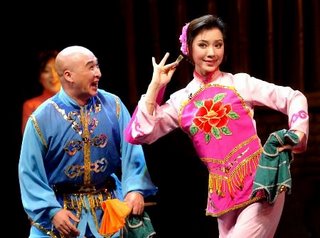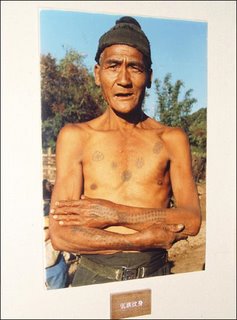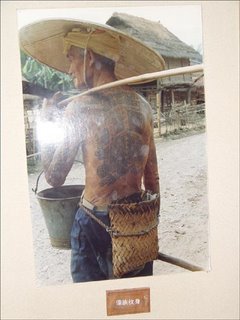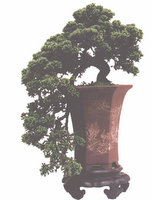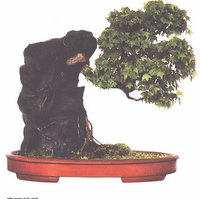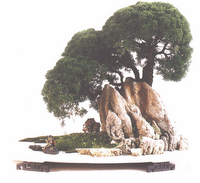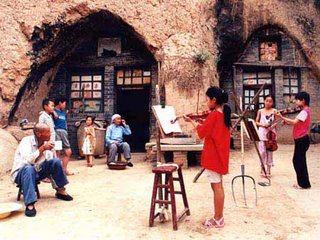
On a freezing winter's day warmed by the sun we arrived at the peasant house of six stone caves which was our goal in Northern Shaanxi Province on the vast loess plateau. In the courtyard stood several leafless jujubetrees hung with bright yellow corn ears. On one side of the arched door were strings of red chilis-on the other, jade white gourds. The clucking of the hens as they pecked grain from the ground added life to this quiet country house.
"This would make a gorgeous New Year woodcut!" exclaimed my companion, press photographer Lu Huang. He had graduated from the Beijing Institute of Fine Arts two years before and he couldn't resist making a composition of everything he saw. Ma Jinxi, the official of the county government who was showing us around, added, "You should have seen it in the fall when the threshing grounds were covered with different kinds of grain and the jujube trees were green and thick with dates, like so many agates."
We were in Suide County 400 kilometers north of Xi'an, Shaanxi's capital. Northern Shaanxi is the part of the province which includes among its more than twenty counties and cites Yan'an, the revered cradle of the Chinese revolution. Back in the Qin Dynasty over two thousand years ago, Suide was an important town in the frontier area. In today's capital of the county, are the tombs of Crown Prince Fu Su and General Meng Tian of the Qin Dynasty. It was Meng Tian who helped the first emperor of Qin build the Great Wall. He also may have invented the Chinese writing brush.
Our host Wang Shuhou emerged to greet us in a sheepskin coat, a white towel tied around his head. A tall, rugged man of 57 with a deeply lined sunburned face and bushy eyebrows, he looked every inch the hard-working peasant he was. As he led us to the arched doorway, insisting on carrying our luggage, he gestured toward the three caves to the east, explaining that these were his quarters while the rest were occupied by his nephew. Now Mrs. Wang drew aside the door curtain and motioned us inside and onto the kang.
Inviting visitors to take their ease on the kang goes back a long way among the peasants of north China. A multi-purpose piece of furniture if ever there was one, the kang serves as a bed, a place for members of the family to sit and talk among themselves, a sewing center, a desk for the children to do homework, a place to entertain visitors. Always adjacent to the stove, it is usually built of mud bricks or stone slabs with a fire passage inside. The left-over heat of the cooking fire passes under the kang before it goes out the chimney at the roof of the cave. The kang not only helps save firewood_it keeps the air fresh indoors.
Sitting on the kang with our legs crossed warmed us in more ways than one. The felt blankets helped, but the Wangs' spirit of welcome produced the stronger glow.
First our host set a small short-legged table in the middle of the kang on which he put a plate of apples and a large bowl of peanuts and wine-saturated dates, simple enough fare to be sure but delicious and meaningful. Wang pointed out that there was little to offer guests in these remote mountains, but "these are the products of our village and it's our pleasure to share them with you."
We were to be offered these wine-saturated dates everywhere we went in Northern Shaanxi. You can make them yourself quite easily. Here's how: you clean and dry however many you want to preserve, put them in jars, and after spraying them with a bit of white spirits, seal the mouths of the jars and put them away for a couple of weeks. They have now expanded fully; they are plump and lovely to look at and even better to taste-deliciously sweet and fragrant with the scent and flavor of wine. The locals here swear that these red dates invigorate one's spleen and benefit the kidneys. Moreover, they say, since they have no side effects, you can eat as many as you like. Lu Huang and I made the most of our opportunity, leaving only a couple in the bowl.
All the villagers here plant jujube trees around their houses, and the red ones on Northern Shaanxi are well-known throughout China. The local people keep a sack or two of dried dates for themselves to send to friends and relatives, give to children, or keep for folks like us passing through. For festivals, weddings and elderly people's birthday celebrations they make date cakes that look like pagodas.
After consuming all those dates and peanuts I was suddenly quite thirsty, but neither Mr. nor Mrs. Wang saw fit to offer us tea and I asked Ma Jinxi how come. He explained that tea drinking was habit that somehow had never penetrated this area and that if I wanted any I'd have to ask for it. "But," he pointed out, "fruit can quench your thirst just as well now, can't it?" And he passed me a nice fat apple.
